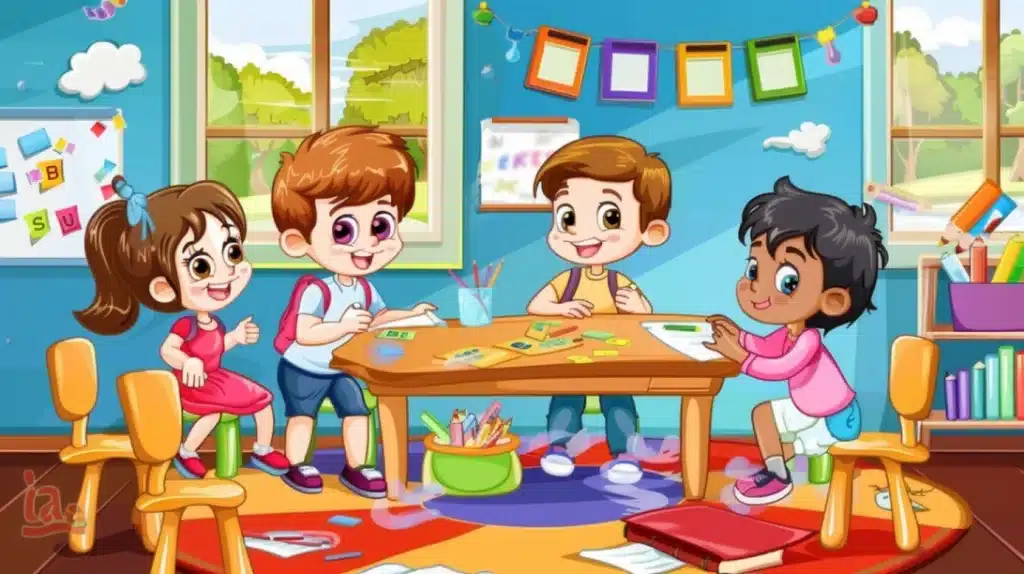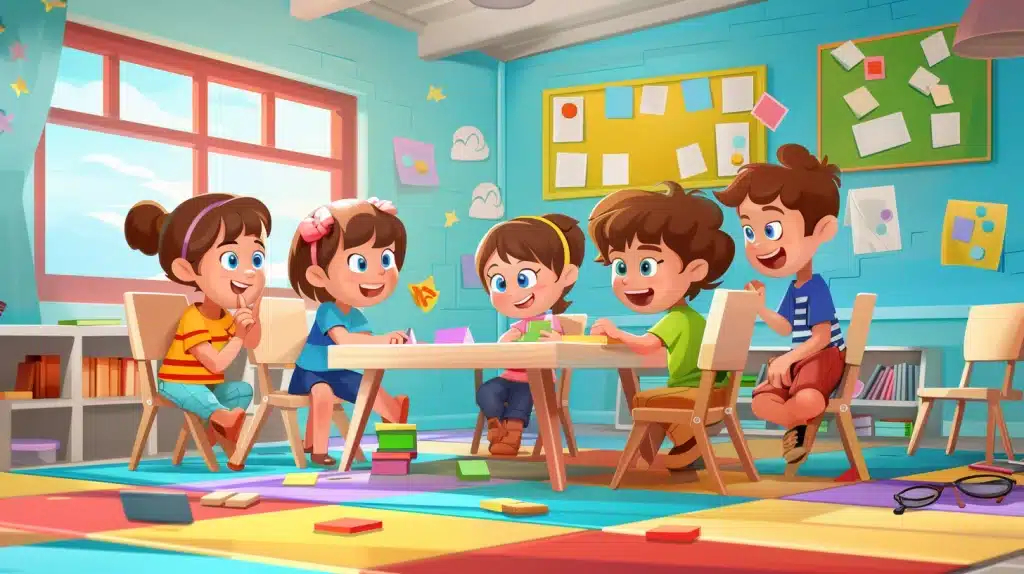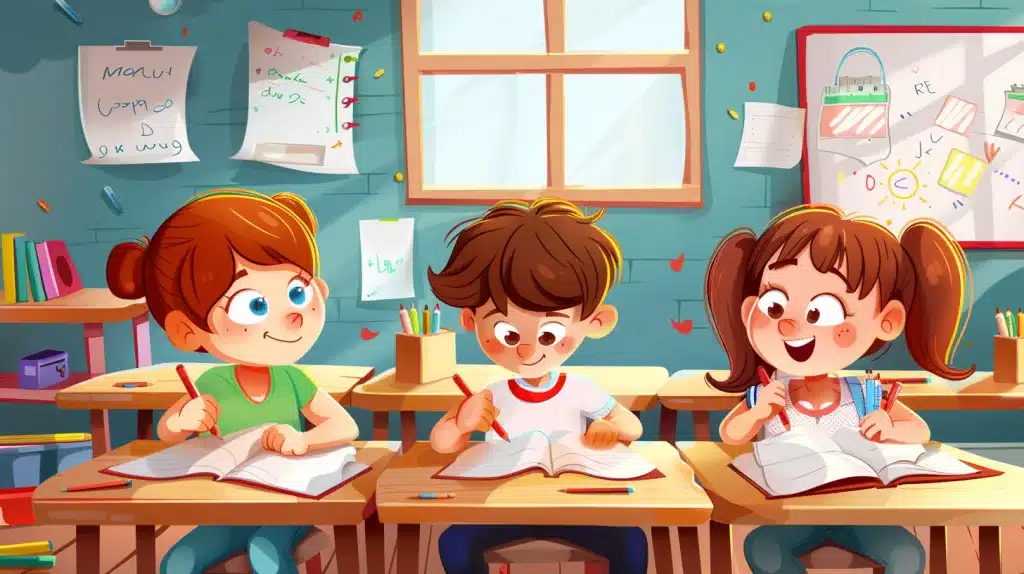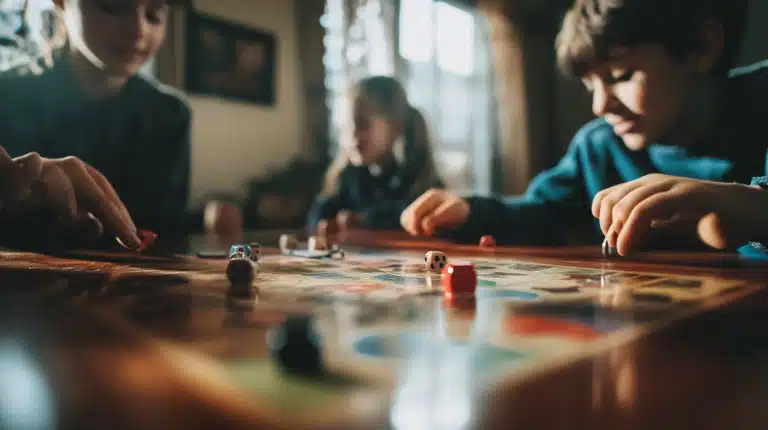12 Fun Classroom Activities for R-Controlled Words
Teaching students to read words with r-controlled vowels can be challenging. However, the bossy ‘r’ takes charge, changing the vowel sound and confusing young learners.
But fear not – I have a solution!
In this post, I’ll share various fun, hands-on activities to engage your students and help them master words with ‘ar,’ ‘er,’ ‘ir,’ ‘or,’ and ‘ur.’
Get ready to explore exciting games, sorting mats, and reading passages that will keep your students motivated while reinforcing this crucial phonics skill.
Let’s make learning R-controlled words a breeze in your classroom!
12 Fun Classroom Activities for R-Controlled Words
Word Sorting Activities
1. Grouping R-Controlled Words
Grouping words by their vowel sounds is a powerful way to help students recognize and master r-controlled vowels.
Sorting words by their r-controlled vowel sounds helps students understand each sound’s unique characteristics and improves their reading and spelling skills.
Steps to Group R-Controlled Words:
- To begin, create a list of words that feature a variety of r-controlled vowels.
- Your list should include words with ‘ar,’ ‘er,’ ‘ir,’ ‘or,’ and ‘ur’ sounds, such as “car,” “fern,” “bird,” “horn,” and “hurt.”
- Include a balanced mix of words for each sound to give students ample practice with all five r-controlled vowels.
- Give each student a copy of the word list and explain that they will be sorting the words into groups based on their r-controlled vowel sound.
- Provide students with visual aids like color-coded charts or sorting mats with separate sections labeled with each r-controlled vowel pattern (‘ar,’ ‘er,’ ‘ir,’ ‘or ‘ur’).
- Have students read each word, identify the r-controlled vowel sound, and place the word in the corresponding section of their sorting mat or chart.
2. Interactive Sorting Games
Incorporating interactive games into your r-controlled vowel lessons can be a fun and effective way to keep students engaged while reinforcing their skills.
Turning word sorting into a game can boost student motivation, participation, and retention of key concepts.
Types of Sorting Games:
- Physical Word Cards: One simple way to gamify word sorting is using physical word cards. Create cards, each featuring a word with an r-controlled vowel. Students can take turns drawing a card, reading the word aloud, and placing it on the correct spot on a sorting mat. You can add an element of competition by having students race to sort a certain number of words correctly.
- Digital Word Sorting: Take advantage of technology by using educational apps or online platforms that offer digital word-sorting games. Look for games that allow students to drag and drop words into the appropriate r-controlled vowel category. Many of these digital games provide instant feedback and track student progress, making it easy to monitor individual student performance.
Matching Games
3. Word-Picture Matching
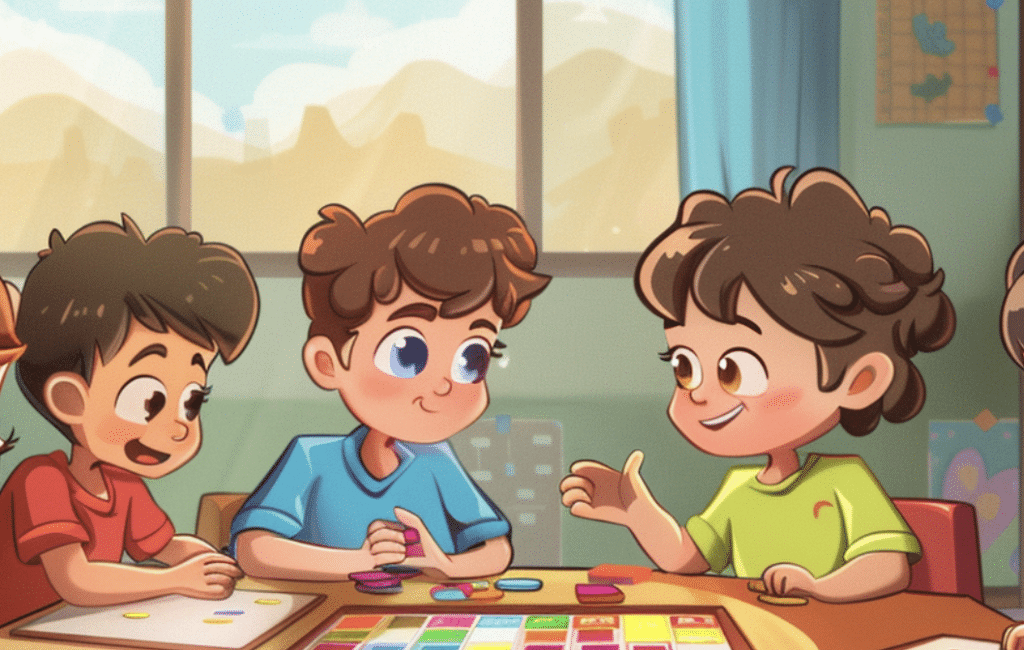
Incorporating visual aids in phonics instruction can be a powerful way to help students grasp and retain new concepts.
Students can form strong associations between a word’s written form and meaning by matching words with corresponding pictures.
This visual learning approach is particularly effective for reinforcing r-controlled vowel sounds and helping students recognize these patterns in context.
Steps for the Matching Activity:
- Distribution: Give each student or group a set of word and picture cards. To begin the activity, have students mix the cards and spread them out face-up on a table or the floor. Ensure the word and picture cards are not directly next to their matches.
- Matching Process: Instruct students to look carefully at each word card and find the picture card that best represents that word. As they make each match, encourage students to read the word out loud, emphasizing the r-controlled vowel sound. This verbal component helps reinforce the connection between the written word and its pronunciation. Have students continue matching until all word cards are paired with their corresponding pictures.
4. Memory Matching
Memory matching games are a classic educational tool that can be easily adapted to practice r-controlled vowel words.
In addition to reinforcing word recognition and spelling, these games also work students’ working memory.
Memory-matching activities can improve focus, concentration, and mental flexibility by challenging students to remember the location of specific word cards.
Steps for the Memory Game:
- Setup: Begin by shuffling the cards and laying them out face-down in a grid pattern on a table or the floor. Ensure the cards are evenly spaced and that students can easily reach all of them.
- Gameplay: To play, students will take turns flipping over two cards at a time, trying to find matching pairs. If a student successfully finds a pair of matching r-controlled vowel words, they keep those cards and take another turn. If the cards do not match, the student flips them back over, careful to return them to the same spot, and the next player takes a turn. As students flip over cards, encourage them to read each word aloud, even if it’s not a match. This reinforces the connection between the spelling and pronunciation of r-controlled vowel words.
- Winning the Game: The game continues with students taking turns until all the word pairs have been found. At the end of the game, the student with the most matched pairs is the winner.
Creative Writing Activities
5. Story Creation
Creative writing activities, such as story creation, can be a powerful tool for helping students internalize and apply their knowledge of r-controlled vowels.
When students use these words in the context of their own imaginative stories, they develop a deeper understanding of each word’s sound and meaning.
Crafting narratives also gives students a sense of ownership over their learning, making the process more engaging and memorable.
Steps to Implement Story Creation:
- Prompting Students: To begin a story creation activity, provide students with a list of r-controlled words to incorporate into their writing. Choose words that you’ve recently focused on in your lessons, such as “car,” “star,” “bird,” “corn,” and “turn.” Then, offer a creative writing prompt or scenario to spark students’ imaginations. For example, you might ask students to write a story about a day in the life of a starfish who goes on an adventure. Encourage students to be as descriptive and imaginative as possible in their storytelling.
- Writing the Story: Give students time to plan and draft their stories independently or in small groups. As they write, remind them to use as many words from the r-controlled word list as possible. You might set a challenge, such as using at least 10 r-controlled words in their story. While focusing on incorporating these specific words, encourage students to use vivid language, interesting characters, and clear story structures.
- Sharing Stories: Once the stories are complete, create opportunities for students to share their work with others. You might have students read their stories aloud in small groups, providing positive feedback and pointing out any particularly effective uses of r-controlled words. Consider organizing a class-wide story-sharing session where students can celebrate each other’s creativity and learning.
6. Poem Writing
In addition to story creation, poetry writing is another engaging way for students to practice using r-controlled vowel words.
Crafting poems encourages students to play with language, exploring the sounds and rhythms of words in a creative context.
Through poetry, students can experiment with rhyme, alliteration, and other literary devices that deepen their phonemic awareness and understanding of r-controlled vowel patterns.
Steps to Implement Poem Writing:
- Encouraging Creativity: Begin by introducing students to different styles of poetry, such as acrostic poems, haikus, or free verse. Provide examples of each type and discuss their unique characteristics. Then, give students a list of r-controlled words and challenge them to use these words to write their poems. Encourage students to be creative in their word choice and to experiment with poetic techniques like rhyme, repetition, and descriptive language.
- Writing the Poems: Give students ample time to brainstorm and draft their poems. As they write, circulate the room to offer support and guidance. Encourage students to read their poems aloud to themselves or a partner to get a sense of the rhythm and flow of their words. Remind students that poetry is a form of creative expression and that there are no “wrong” ways to write a poem.
- Displaying Poems: Once students have completed their poems, create a classroom display to showcase their work. You might make a poetry wall where each student’s poem is written or typed on colorful paper. Consider organizing a classroom poetry reading event where students can share their poems aloud with their classmates. This celebration of student work validates the effort and creativity that each student put into their writing.
Phonics and Spelling Activities
7. Phonics Bingo

Phonics Bingo is a fun and interactive way to reinforce students’ recognition and understanding of r-controlled words.
Students are more likely to stay engaged and motivated to practice their phonics skills by turning learning into a game.
Bingo is a versatile activity easily adapted to focus on specific r-controlled vowel sounds, making it a valuable tool for differentiated instruction.
Steps to Implement Phonics Bingo:
- Creating Bingo Cards: To make your Phonics Bingo cards, start by selecting various r-controlled words that cover all the key sounds you want to focus on (ar, er, ir, or, ur). Aim for a mix of words with different difficulty levels to challenge students appropriately. You can create the cards by hand or use a template available online. Each card should have a unique combination of r-controlled words arranged in a grid format.
- Conducting the Game: To play, give each student a bingo card and some markers or chips. Explain that you will call out r-controlled words and that students should mark the word on their card if they have it. The first student to mark a complete row, column, or diagonal should call out “Bingo!” and will be the winner of that round. Continue playing rounds until all students have had a chance to win or until a predetermined time limit is reached.
- Classroom Implementation Tips: To make the game run smoothly, consider displaying the words on a projector or whiteboard as you call them out. This visual aid can help students follow along and stay focused. You can also vary the game’s difficulty by calling out sentences containing r-controlled words or by giving definitions and having students find the matching word on their cards. Encourage students to say each word aloud as they mark it to reinforce proper pronunciation and recognition of the r-controlled vowel sound.
8. Spelling Races
Spelling races are a high-energy activity that challenges students to quickly and accurately spell words with r-controlled vowels.
By incorporating a competitive element, spelling races can make practicing spelling skills feel more like a game than a drill.
Students will be motivated to do their best as they work collaboratively with their teammates to earn points.
This fast-paced activity is a great way to assess students’ mastery of r-controlled words while keeping the classroom atmosphere lively and engaging.
Steps to Implement Spelling Races:
- Dividing the Class into Teams: Begin by splitting your class into teams of equal numbers. Assign each team a specific classroom area to gather in, such as a cluster of desks or a section of the carpet.
- Conducting the Spelling Race: Prepare a list of r-controlled words in advance, including words with various difficulty levels. To start the race, call out a word from your list. One student from each team should race to the board to write the word correctly. The first team to spell the word accurately earns a point. If a word is misspelled, give the other teams a chance to steal the point by spelling it correctly. Keep track of points on the board to maintain excitement. Continue calling out words and having students take turns racing to spell until all words have been used or a time limit is reached.
Hands-On Activities
9. Word Construction

Hands-on learning is a powerful approach in phonics education, as it allows students to engage with the material and construct their understanding actively.
Word construction activities, in particular, effectively reinforce students’ knowledge of r-controlled vowels.
By physically manipulating letters to form words, students can develop a deeper understanding of the relationship between sounds and spellings, improving retention and application of these key phonics concepts.
Steps to Implement Word Construction:
- Building R-Controlled Words: Begin by introducing the concept of word construction and demonstrating how to use letter tiles or magnetic letters to form words. Then, provide students with a list of target R-controlled words to build. As students construct each word, encourage them to say it aloud, emphasizing the R-controlled vowel sound. This multisensory approach helps reinforce the connection between the words’ visual, tactile, and auditory components.
- Classroom Activities: Word construction activities can be easily adapted for various classroom settings. For individual practice, provide each student with their own set of letters and a list of words to build. For small group activities, have students work together to construct words and compare their creations. You might also introduce a timed element, challenging students to see how many r-controlled words they can build within a set period. This adds an element of excitement and encourages fluency in word construction.
10. Craft Projects
Integrating arts and crafts into phonics instruction is a fun, visually engaging way to reinforce students’ understanding of r-controlled words.
Craft projects allow students to express their creativity while actively working with the target words, making the learning experience more memorable and enjoyable.
By creating visual representations of r-controlled words, students can form strong mental associations between the words’ spellings, sounds, and meanings, leading to improved retention and recall.
Steps to Implement Craft Projects:
- Creating Posters and Collages: Introduce the craft project by explaining the guidelines and showing examples of completed posters or collages. Encourage students to select various r-controlled words to feature in their projects, either from a pre-generated list or from their reading and writing. As students work on their projects, encourage them to use vibrant colors, interesting fonts, and creative designs to make their work visually appealing and engaging.
- Displaying Projects: Once the craft projects are complete, designate a special area in the classroom to display them. This could be a bulletin board, a gallery wall, or a clothesline strung across the room. Organize a “gallery walk” where students can tour the displays, admiring their classmates’ work and discussing the featured r-controlled words. This sharing process reinforces the sense of community and collaboration in the classroom while providing additional exposure to the target words.
Review and Reinforcement Activities
11. Word Wall

A word wall is an effective tool for reinforcing students’ knowledge of r-controlled vowels.
Create a Word Wall with R-Controlled Words:
- To create an R-controlled word wall, designate a prominent space in your classroom and display a collection of words containing the target vowel patterns.
- Use colorful cards or cut-out letters to make the words visually appealing and easy to read.
- Organize the words by their specific r-controlled vowel sounds (ar, er, ir, or, ur) to help students recognize the patterns and make connections between similar words.
- Regularly Update and Review the Words To keep the word wall relevant and engaging, update it regularly with new words that students encounter in their reading and writing.
12. Quizzes and Assessments
Periodic quizzes and assessments are valuable tools for monitoring students’ progress and identifying areas where additional support may be needed.
Conduct Periodic Quizzes on R-Controlled Words:
- Create short, focused quizzes that specifically target r-controlled vowel words and patterns.
- These quizzes can take various forms, such as fill-in-the-blank, word matching, or spelling tests.
- Use various formats to keep the assessments engaging and accommodate different learning styles.
- Administer the quizzes regularly, such as once or every other week, to track students’ growth over time.
- Provide Feedback and Additional Practice as Needed After each quiz, review the results with your students.
Conclusion
Learning r-controlled words may seem daunting initially, but the right activities and approach can be an exciting journey for your students.
By incorporating a mix of hands-on games, interactive technology, and creative writing exercises, you’ll keep your students engaged and motivated as they master these tricky vowel sounds.
Remember to provide plenty of opportunities for practice, review, and celebration.
As your students gain confidence in reading and spelling words like “star,” “bird,” and “corn,” they’ll be well on their way to becoming skilled readers and writers.
So dive in, have fun, and watch your students shine as they conquer the world of r-controlled vowels!




